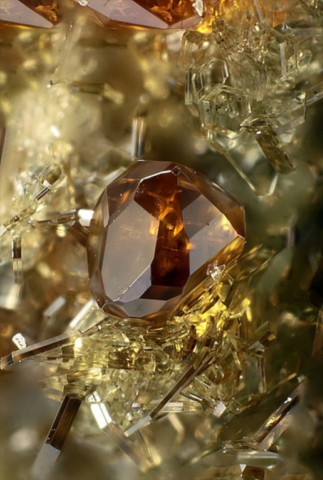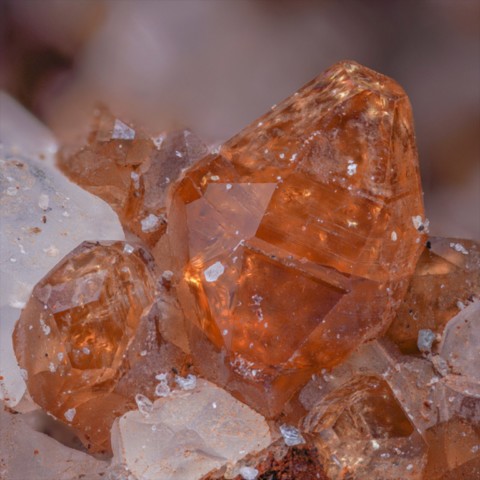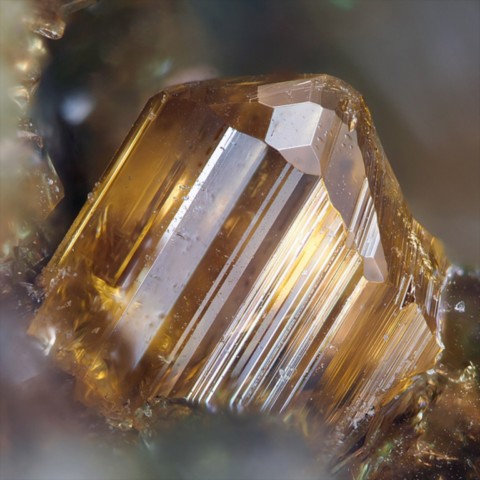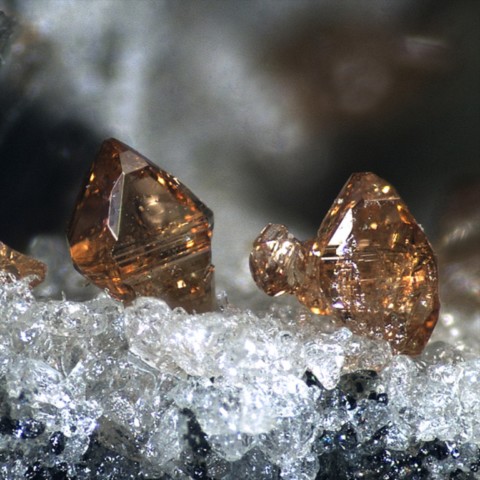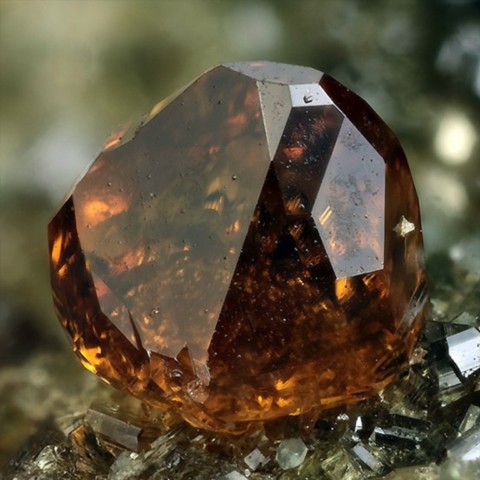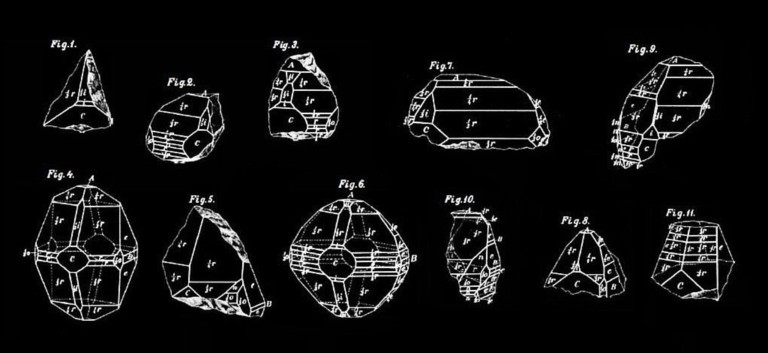 Humite - Encyclopedia
Humite - Encyclopedia
Class : Silicates
Subclass : Nesosilicates
Crystal system : Orthorhombic
Chemistry : Mg7(SiO4)3 (F,OH)2
Rarity : Quite common
Humite is the main representative of the group of the same name, which also includes chondrodite and clinohumite. It is a mineral typical of limestones and dolomites affected by contact metamorphism caused by plutonic and alkaline rocks which transformed them into cipolins, marbles, with ancillary formation of skarns. As with chondrodite, the genesis of humite also requires significant metasomatosis with the addition of fluorine. Humite is also observed, like chondrodite, in blocks of metamorphosed limestone rejected by Italian volcanoes (beautiful crystals of 1 cm perfectly formed at Vesuvius and Mount Somma, near Naples). It was named in honor of Sir Abraham Hume, an English collector of precious stones and minerals. Humite crystals form rounded grains with a cracked appearance, more rarely isometric or tabular individuals, rich in faces, with shapes reminiscent of olivine. Twins and aggregates are common. The color ranges from yellow-orange to red-brown, even brown. It can be cut for jewelry.
Main photo : Humite from Mount Somma, Naples, Italy © Matteo Chinellato
Humite in the World
Twinning
Twins are common for this mineral species.
Crystal drawings and description of humite from Kogruvan made by Hjalmar Sjögren (1893)
On Plate II a number of humite crystals are represented, figs.1, 2, 3, 5, 7, 8, 9 and 10 being drawn from nature, while figs. 4 and 6 are idealized. The crystals vary from one mm to a few cm in length; among those reproduced and measured No 3 is only 2 mm, No 2 is 4 mm, No 4 also about 4 mm, while No 6 is 1 cm and No 1, though only fragmentary, is nearly 2 cm.
Fakes and treatments
No fakes recorded for this mineral species.
Hardness : 6
Density : 3.20 to 3.32
Fracture : Irregular to sub-conchoidal
Streak : White
TP : Translucent to transparent
RI : 1.607 to 1.675
Birefringence : 0.032
Optical character : Biaxial +
Pleochroism : None
Fluorescence : None
Solubility : Sulfuric acid and hydrochloric acid
Magnetism : ParamagneticRadioactivity : None

